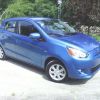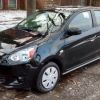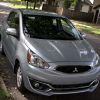
Originally Posted by
Loren

I still stand by 20% being as far as you'd want to go without adding more fuel, which means either tuning, or larger injectors, or higher fuel pressure, or aftermarket engine management... or some combination thereof.
That is probably a very good rule of thumb. It would be really nice to get the specs of our fuel pump and injectors. I've looked for quite a while to see what the fuel injector flow rate is, but I could not find any data. I also have no idea what the flow rate is on the fuel pump either. It does not seem to be shared with other vehicles. All the guys running forced injection have also never shared what they've done about the fuel system. 
So, if you want to get accurate... you're looking at 93.6 hp for a simple "bolt-on" compressed air boost system. The benefit of this over NO2 would be that you could recharge your bottle at home, or even in the car with just an air compressor. (though, I don't know what kind of compressor you need to get to 3,000 psi... maybe you could compromise on that, run a bigger tank with lower pressure?)
They sell scuba compressors. They aren't horribly expensive, but aren't cheap either. I think the cheapest I found on amazon was ~$280.
And then, do you want to run "some" boost all the time, or do you want it to be throttle-triggered to only activate at full throttle?
IMO it doesn't make much sense to provide boost until you're at WOT. Unless you're at WOT, there is more power already available.
And then you can get into the fun stuff... do you want to run an on-board compressor that would run as-needed when you're NOT at WOT (sort of like the AC compressor does) to keep the tank pressurized, and take the FE hit for that... and have the boost available for WOT acceleration when you want it?
Knowing how big and heavy my 220V compressor is, I'd have to say I wouldn't want to shoe horn it in to my Mirage haha.
It's all neat ideas to play with, but at the end of the day, you'd end up with a lot greater efficiency and power by either fitting a larger engine, or going with a traditional supercharger or turbocharger.
And, that is probably why we have never seen this technology gain any traction. Its just not that practical or appealing. However, it is interesting to see what can be done. I think I may tinker around with a few ideas and post it here. I'd like to explore the idea of a low (shop pressure) setup. Can it be done super cheap with regular off the shelf items and some modding? Its worth exploring IMO, even just for funsies. But, then again I rather enjoy going through the engineering exercises of proving or disproving a modification. I learn and grow through every failure or success and I enjoy that.
__________________________________________
 View my fuel log 2015 Mirage DE 1.2 manual: 47.2 mpg (US) ... 20.1 km/L ... 5.0 L/100 km ... 56.7 mpg (Imp)
View my fuel log 2015 Mirage DE 1.2 manual: 47.2 mpg (US) ... 20.1 km/L ... 5.0 L/100 km ... 56.7 mpg (Imp)






 2015 Test Mirage
2015 Test Mirage Swarthy
Swarthy
 Reply With Quote
Reply With Quote
 Tim's Mirage
Tim's Mirage

 Underdog
Underdog

